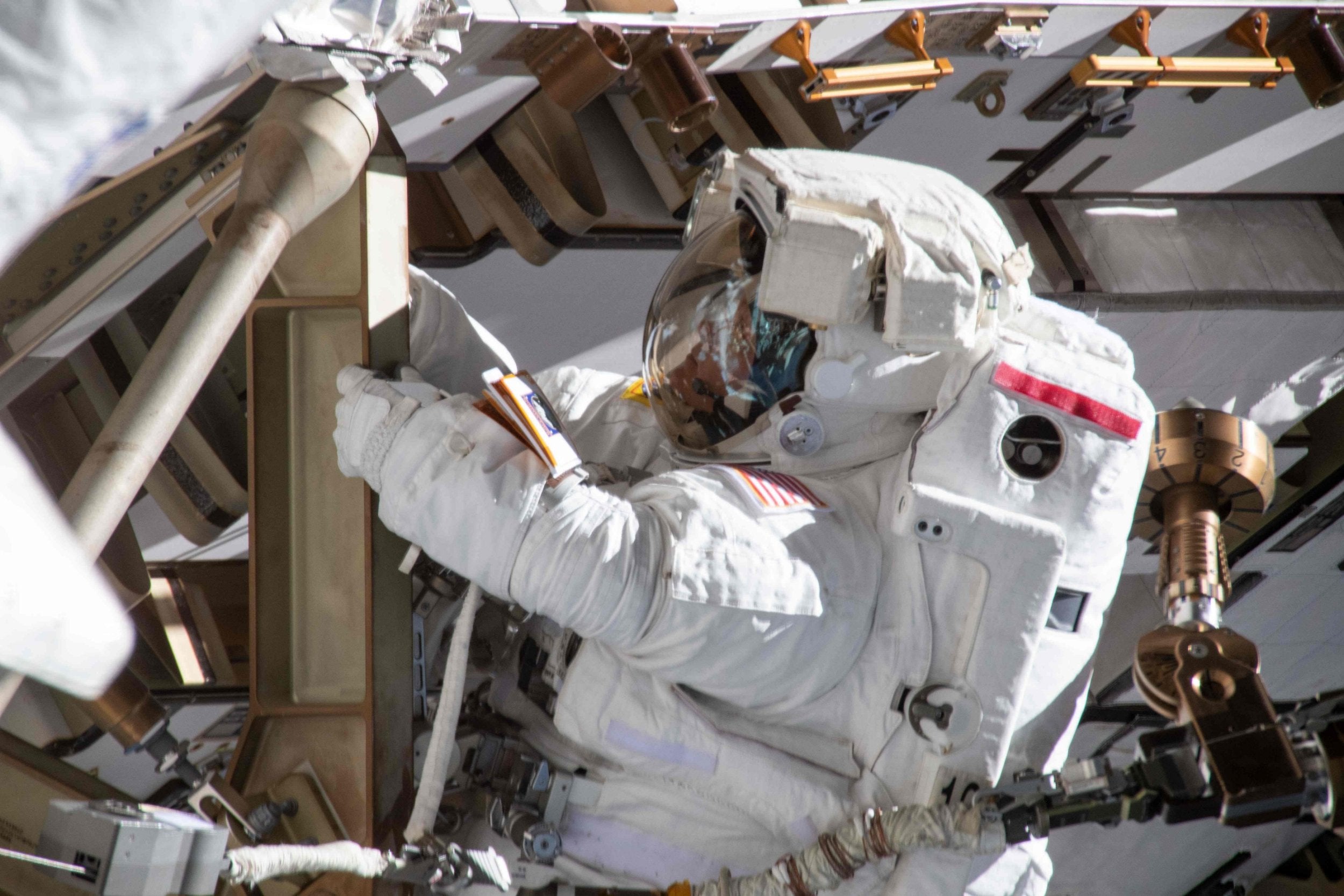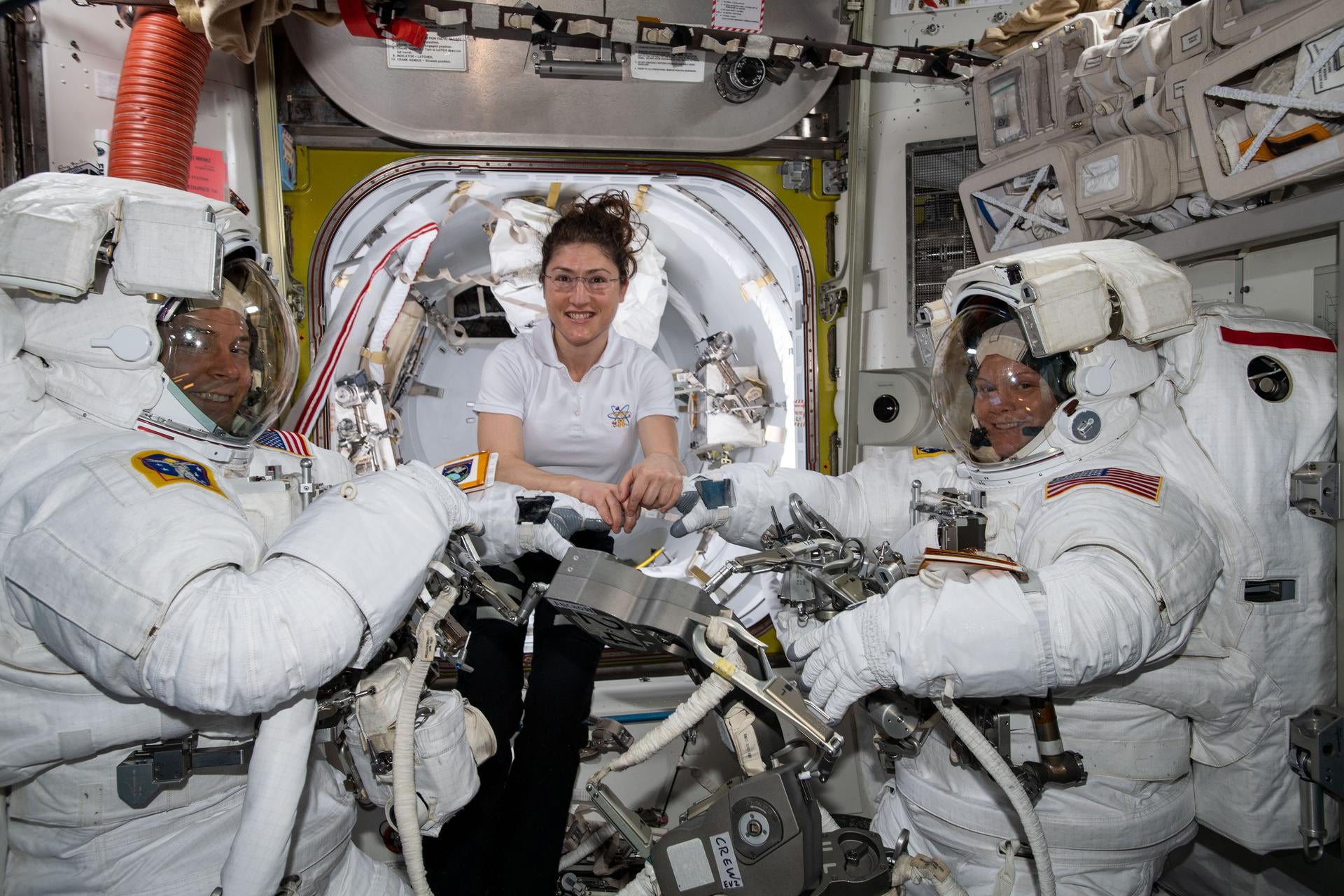What the Nasa spacesuit controversy says about working conditions for women everywhere
When Nasa cancelled a historic all-female spacewalk because of a lack of spacesuits, women in every occupation spoke up about their workplace struggles, writes Jena McGregor

Your support helps us to tell the story
From reproductive rights to climate change to Big Tech, The Independent is on the ground when the story is developing. Whether it's investigating the financials of Elon Musk's pro-Trump PAC or producing our latest documentary, 'The A Word', which shines a light on the American women fighting for reproductive rights, we know how important it is to parse out the facts from the messaging.
At such a critical moment in US history, we need reporters on the ground. Your donation allows us to keep sending journalists to speak to both sides of the story.
The Independent is trusted by Americans across the entire political spectrum. And unlike many other quality news outlets, we choose not to lock Americans out of our reporting and analysis with paywalls. We believe quality journalism should be available to everyone, paid for by those who can afford it.
Your support makes all the difference.A spacesuit may not look much like what most women wear to work. But as plans changed for an all-female spacewalk this week because of spacesuit sizing issues, many working women back on Earth saw something of their own experience in the headlines – sharing stories online about ill-fitting uniforms, male-centred equipment design or office spaces outfitted without their needs in mind.
Across social media platforms, women told of giant overalls, wading boots that were the wrong size, oversize gloves that kept them from being nimble, a lack of bulletproof vests that accommodated their chest sizes and a dearth of petite-size personal protective equipment at construction sites.
“I work in an ambulance, where everything from the driver’s seat to the latch on the cot is made for your average sized man,” tweets one woman based in Canada. “I know this intimately, and felt an angry pit of experiential empathy in my stomach when I heard about this spacewalk cancellation.”
Other women make connections to office environments, such as lower indoor air temperatures (research has shown that women tend to have lower metabolic temperatures, making them feel colder in office temperatures set for the average man); or having to breast-feed in bathroom stalls rather than designated spaces for new mothers; or even the lack of conference swag at professional events.
“I can almost hear the tired sighs of every woman who has ever attended a science conference and asked for a T-shirt that fits,” says one female astrophysicist on Twitter.
The decision to change the spacewalk was, of course, more complex than was sometimes described, and an agency dependent on congressional funding faces different obstacles than private-sector employers. The agency posted a Q&A on Wednesday explaining the decision, and the astronaut who pulled herself from the lineup, Anne McClain, tweeted that “nothing has been postponed or cancelled.” She wrote: “This decision was based on my recommendation. Leaders must make tough calls, and I am fortunate to work with a team who trusts my judgement.”
In the Q&A, Nasa explained that McClain had trained in both medium- and large-size suits before leaving for the space station, and had planned to wear the large during the historic moment. But after a spacewalk on 22 March, she realised the medium was the better fit, and changed plans for safety reasons and to prevent delays, Nasa said. While another medium torso piece was on board, it would have taken at least 12 hours to configure it for space.
Spokesperson Stephanie Schierholz says Nasa takes more than 80 different body measurements before sizing the suits for astronauts, noting there are many sizing options, including eight different adjustable elbows and 65 size options for gloves. She says that of the three Nasa astronauts on board, two are women, and that all three hail from the first Nasa astronaut class that was 50 per cent women, the class of 2013.

“We believe we have the best teams, making the best decisions they can to achieve the mission goals in a way that mitigates risk as much as possible,” Schierholz says, adding she believes an all-female spacewalk is “inevitable”.
Even some observers who said they understood the nuances of the decision shared how familiar the story felt to them. One Twitter user said she understood the decision was about more than bias, but “it still gave me the same sinking feeling that I’ve gotten every time a job didn’t have enough small uniforms in stock and I got stuck working in clothes three-plus sizes too big”.
Several point to Invisible Women: Data Bias in a World Designed for Men, a new book by feminist activist Caroline Criado Perez. In it, she details how a range of industries and fields either turn to male sizes as a default or don’t incorporate enough data on women. For instance, the most commonly used crash-test dummies are the size of an average man, farm equipment is also influenced by the sizes of men, and little data on occupational health and safety has been focused on women.
“My social media has been completely overrun with this story and women sharing stories that absolutely don’t surprise me,” Criado Perez says. “It’s a real issue and with women saying, ‘Here’s how it manifested itself in my field,’ it becomes impossible to bat it away.”
Abby Ferri, who leads a group focused on women and safety at the American Society of Safety Professionals, shared the article on LinkedIn. As someone who works on insurance programmes for construction companies, she says she knows of women every day who use duct tape on the top of their gloves or add it to the bottom of their coveralls. With short but curvy women, she says, “an employer might throw them a 2XXL coveralls” to make them fit better.
Women in the construction industry, she says, often don’t say anything because they don’t want to call attention to themselves in a workplace where they’re already rare, so they will just take the ill-fitting equipment and make their own modifications. Another challenge, she says, comes from manufacturers, who sometimes have quantity minimums for ordering smaller-size equipment that employers may not want to accommodate in an industry where women make up less than 10 per cent of the workforce.
The attention that the Nasa story has brought to the issue, however inadvertently, could help shine a light on a real problem in other fields, she says: “Maybe instances like this help elevate the issue. It’s something that happens everywhere.”
© Washington Post
Join our commenting forum
Join thought-provoking conversations, follow other Independent readers and see their replies
Comments